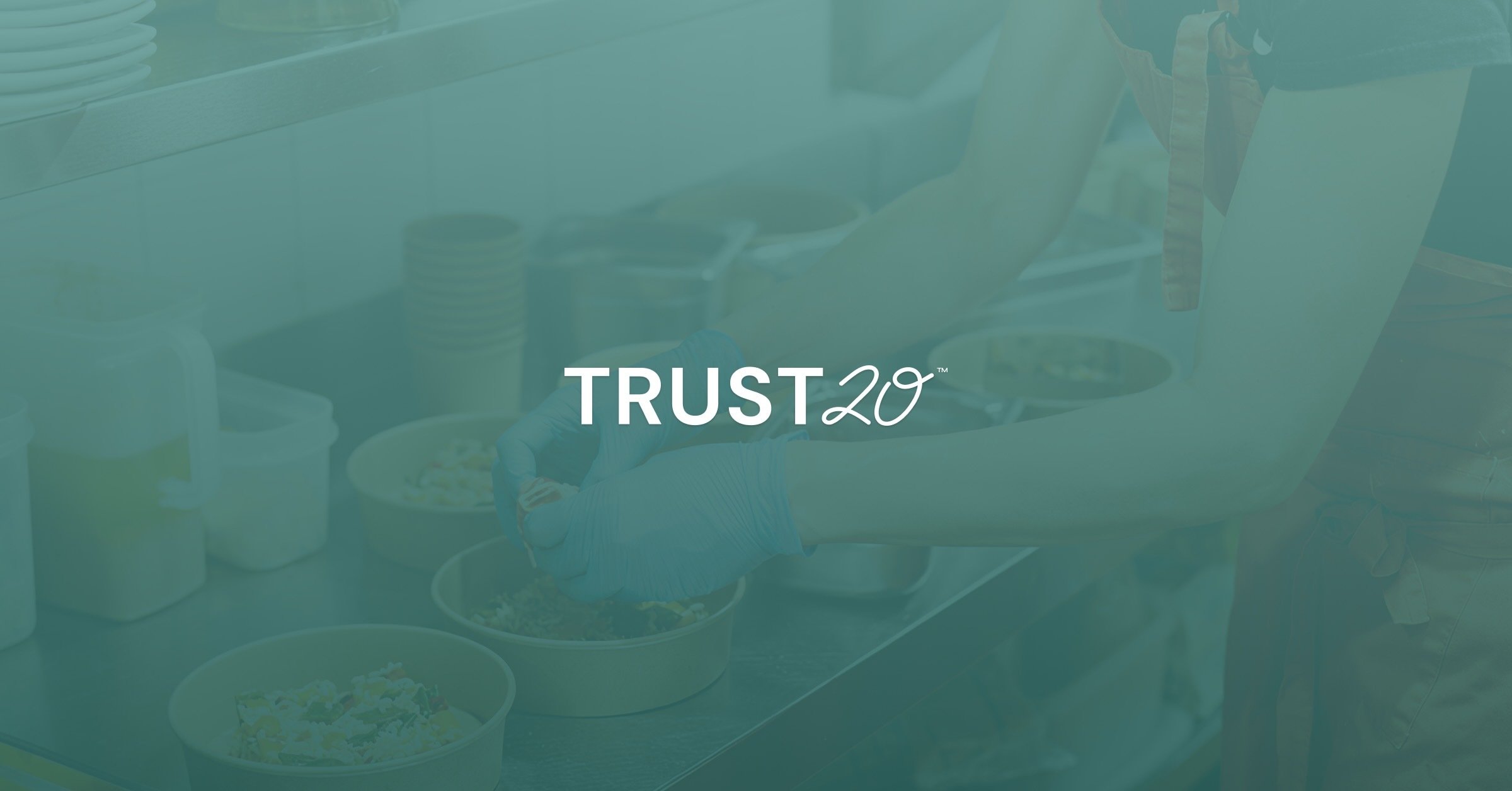Salmonella is one of the leading causes of foodborne illness in the United States. Each year, it is responsible for around 26,500 hospitalizations and 420 deaths.1 It led to more than three dozen food recalls in 2022 alone.2
It’s no minor issue! But what exactly is Salmonella, and how can you, as a foodservice professional, prevent it from taking root in your establishment?
Understanding the answers to these questions will help you protect your customers and safeguard your business’ reputation.
In this guide, we’ll walk you through the most critical information you need to know about Salmonella, from what it is to how it spreads and, most importantly, what you can do to prevent it. Read on to learn:
What Are the Symptoms of a Salmonella Infection?
How Long Does Salmonella Last?
12 Ways to Prevent the Spread of Salmonella
What to Do If There’s a Salmonella Outbreak
What is Salmonella?
Salmonella is a type of bacteria that can cause an infection known as salmonellosis.
There are several different types of Salmonella bacteria. In 1986, veterinarian Daniel Elmer Salmon named the bacteria after discovering that it causes many animal diseases.
Salmonella lives in the intestinal tracts of animals, including birds. Humans can become infected in several ways, but the most common is by consuming contaminated food.
The bacteria often sits on raw food and then spreads through cross-contamination.
Outbreaks have been tied to various animal and plant-based foods, ranging from poultry and eggs to sprouts, cucumbers, and other fresh produce. Most people associate undercooked eggs, raw or undercooked meats, milk, and other dairy products with Salmonella risks, but processed foods are also vulnerable to contamination.
There are two categories of illnesses caused by Salmonella: non-typhoidal Salmonella, which is the most common, and typhoid fever, which is not present in animals and is more likely to cause severe illness.
What are the symptoms of a Salmonella infection?
Symptoms of a Salmonella infection can start anywhere between twelve hours and three days after consuming contaminated food or drink.4
The most common symptoms include diarrhea, fever, stomach cramps, nausea, vomiting, and headache. In most cases, the illness lasts four to seven days. It can also cause severe dehydration, which requires medical attention.
While anyone can contract salmonellosis, young children, older adults, and immunocompromised people are more likely to develop severe symptoms. In rare cases, it can cause severe illness or the death of an unborn child.
It’s also important to remember that prolonged dehydration can lead to kidney failure. The infection can sometimes spread from the intestines to the bloodstream, which can be life-threatening without prompt antibiotic treatment.
How long does a Salmonella infection last?
Again, salmonellosis can last from a few days to a few weeks. Unfortunately, even after treatment, some symptoms may linger. People can also remain contagious for several months because the bacteria can stay in the body for a long time.
12 ways to prevent the spread of Salmonella
Salmonella can have a devastating impact on your establishment. The best way to prevent contamination is to approach food safety proactively. Let’s review some practical steps to prevent contamination in your establishment.
1. Keep raw meat, poultry, seafood, and eggs separate
Separating ingredients is a simple and effective way to minimize cross-contamination.
Store raw meat, poultry, and seafood separately from ready-to-eat foods in the refrigerator or cooler. Always ensure you store food in appropriate containers that do not allow for leaks or spills. Place items that could cause contamination in different drawers or on separate shelves.
2. Use separate cutting boards and plates
Don’t forget: cross-contamination is one of the main drivers of foodborne illness.
During food prep and storage, use different cutting boards and plates for each type of food you prepare. Ensure you are using a clean cutting board and utensils for each task.
Consider using color-coded cutting boards to avoid using the same cutting board for multiple food items, thus decreasing the risk of contamination.
3. Use a food thermometer
Thoroughly cooking food kills Salmonella. Always prepare food, especially meat, poultry, seafood, and eggs, to their proper internal temperatures.5 A food thermometer is essential in preventing foodborne illnesses. Let’s review some basic, minimum internal cooking temperatures below.
|
Leftovers, casseroles, and poultry (including ground poultry) |
165°F |
|
Ground meats (beef, pork, veal, lamb) and meat mixtures |
160°F |
|
Eggs |
160°F, or until the yolks are firm |
|
Beef, pork, lamb, and veal (steaks, roasts, and chops) |
145°F, with a 3-minute rest |
|
Fish |
145°F |
|
Leftovers and casseroles |
Leftovers and casseroles |
4. Keep the cooler at 40° or colder
It's not just about how you package food but also how you manage temperature controls.
Proper refrigeration can significantly slow the growth of Salmonella. Your cooler should be at 40°F (or below) to inhibit bacterial growth. Use an appliance thermometer to monitor the temperature, which may fluctuate as you open and close the cooler throughout the day.
5. Take care when microwaving food
You must cover food before putting it in the microwave and ensure it heats evenly. If your establishment’s microwave does not automatically rotate the food, you should rotate it halfway through the heating process to promote even heating.
6. Cook eggs all the way through
Raw or undercooked eggs are a common source of Salmonella infections. Ensure eggs are cooked until the yolks and whites are firm to prevent illness.
7. Don’t leave perishable foods sitting out
Don’t leave food out at room temperature for over two hours or more than one hour if the temperature is above 90°F. That time limit applies throughout food prep, serving, and leftover storage.
Food left out for too long can harbor dangerous bacteria, especially in warm or moist environments that provide ideal conditions for bacteria.
8. Avoid washing raw meat, poultry, or seafood
It may sound counterintuitive, but washing meat increases the risk of cross-contamination. Once upon a time, it was a common practice, but it is unnecessary today.
9. Check up on your suppliers
Your food safety practices might be spot on, but you could still be at risk if you're not checking up on your suppliers. Always work with suppliers with good reputations and who value transparency and communication.
10. Practice good hand hygiene
Handwashing is the frontline of defense against cross-contamination and foodborne illnesses. Always wash your hands after touching raw meat, poultry, eggs, or unwashed fruits or vegetables. Be sure to dry your hands thoroughly before returning to your work.
11. Wash and peel fruits and vegetables
Raw fruits and vegetables can also carry Salmonella. Rinsing them under running water, or sometimes even peeling them, can remove bacteria hiding in all those nooks and crannies.
12. Stay home if you’re sick
It might seem like common sense, but it can be hard to take a sick day when you know your team is short-staffed. However, sick food handlers are one of the leading factors contributing to the spread of foodborne illnesses. When in doubt, stay home.
What to do if there’s a Salmonella outbreak
It is always ideal to prevent a Salmonella outbreak, but that’s sometimes easier said than done.
If disaster strikes and your establishment is the center of a Salmonella outbreak, you must act quickly.
1. Prepare your documentation and contact the health department
If you believe one of your customers has gotten sick from food contaminated with Salmonella, you must collect a lot of information and share it with your local health department. Always follow local guidance regarding voluntary recalls, holding suspect foods, and tracing the outbreak's source.
2. Thoroughly clean and sanitize all food contact surfaces
In the kitchen, cleaning isn't just about what you can see–it's about what you can't see. When cleaning any suspected areas for contamination, you should use a combination of scraping, soap, and water, followed by a sanitizing solution.
You and your team should clean the cooler's inside walls and shelves, all cutting boards, utensils, countertops, display cases, and any other surfaces that contaminated food may have touched.
3. Assess your food safety management system
Whether your establishment has a HACCP or HARPC plan, this is an excellent opportunity to assess the effectiveness of your emergency response plans. Integrate any lessons learned into your food safety protocols, then update your team’s training accordingly.
Final thoughts
Salmonellosis can have terrible consequences. In 2018, just one outbreak of multidrug-resistant Salmonella infections resulted in 25 hospitalizations and one death across 32 states.3
However, a proactive approach to food safety can prevent these devastating incidents. Proper training for your team (like Trust20’s courses), strict food safety procedures, and staying vigilant against food safety risks can protect your customers and reputation.
Building and maintaining a culture of food safety is an ongoing process, but a commitment to foodborne illness prevention will always pay off.
Sources:
-
U.S. PIRG Education Fund: Food for Thought Part 2: An Analysis of Food Recalls for 2022
-
CDC: 2018 Salmonella Infections Linked to Raw Chicken Products
-
U.S. Department of Health & Human Services: Bacteria and Viruses
-
CDC: Food Safety






.png)

.png)
